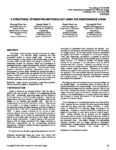
|
A Structural Optimization Methodology Using the Independence Axiom
Lee K. W., Yi J. W., Lee H. L., Park G.
1st International Conference on Axiomatic Design, 2000
The Design Axioms provide a general framework for design methodologies. The axiomatic design framework has been successfully applied to various design tasks. However, the axiomatic design is rarely utilized in the detailed design process of structures when the optimization technology is carried out. The relationship between the axiomatic design and optimization is investigated and the Logical Decomposition method is developed for a systematic structural optimization. The entire optimization process is modified to satisfy the Independence Axiom. In the decomposition process, design variables are grouped according to sensitivities. The sensitivities are evaluated by the Analysis of Variance (ANOVA) to avoid considering only local values. The developed method is verified by examples such as the twenty-five member transmission tower and the two-bay-six-story frame.
|

|
Axiomatic Design of the Liftgate Wedges In Sports Utility Vehicles
Im, K. H., Parthasarathy, R.
1st International Conference on Axiomatic Design, 2000
The liftgate system of the sports utility vehicles (SUV) or minivans has multiple functional requirements and design parameters. A wedge is a small piece of hardware to stabilize the liftgate especially in cross car direction by providing the load path from the liftgate to the surrounding structures. On the other hand wedge may increase the closing effort due to the reaction force in the swing direction. Furthermore, wedges need to accomodate the gap variation to bridge the liftgate and the body frame. This paper presents the characteristics of two different types of wedges in the axiomatic design viewpoint and their effects on the liftgate system.
|
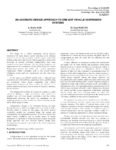
|
An Axiomatic Design Approach To One-DOF Vehicle Suspension Systems
Kar, A. K., Martin, H. E.
1st International Conference on Axiomatic Design, 2000
The design of a vehicle suspension system requires satisfaction of many design aspects including good vibration isolation to secure the occupants comfort, good road-vehicle holding ability and safety. Several vehicle suspension models with structural or actively controlled configurations have been reported in the open literature. The key design objectives are represented by the acceleration of the vehicle body and relative displacement between the vehicle and various suspension components. Other constraints such as the overall system robustness, power and cost requirements are also taken into account. In this paper, two 1-DOF models with a Maxwell type suspension and a Maxwell type suspension with a parallel spring are considered. Mean square acceleration and relative displacement responses of these models are derived for a realistic random road input given in terms of its power spectrum density function.
The optimization problem of suspension systems is usually solved by defining a single performance index which is a weighted sum of mean square acceleration and the relative displacement. However, the results are dependent on the weighting coefficient which is arbitrary; and the solution can not tell us which design is better.
Independence Axiom of the Axiomatic Design can easily distinguish between different designs and can provide an index showing which is better. In this paper, the above derived suspension models are examined using this axiom, and semangularity and reangularity concepts. It has been shown that under certain conditions and in certain range of design parameters, it is possible to obtain decoupled designs. Axiomatic design approach and new relations derived during these investigations may provide a new look at the vehicle suspension system design.
|
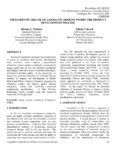
|
Thoughts on the Use of Axiomatic Designs Within the Product Development Process
Mohsen, H. A., Cekecek, E.
1st International Conference on Axiomatic Design, 2000
Increased competitive pressures forced producers of goods to accelerate their product development time, minimize costs, improve organizational efficiencies, reduce product complexity, systematically design goods that are key for customer satisfaction and delights, innovative reuse of current technologies, and improve product quality. In this manuscript, we discuss the potential utilization of Axiomatic Design methods to enhance the development of Failure Modes and Effects Analysis, Parameter diagrams for robustness studies, and improve quality through robustness, testing and enhancing functional requirements specifications. A Line Pressure Regulating System example using this integrated framework will be provided.
|
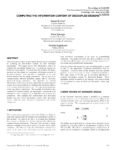
|
Computing the Information Content of Decoupled Designs
Frey, D. D., Jahangir, E., Engelhardt, F.
1st International Conference on Axiomatic Design, 2000
The information content of uncoupled designs can be computed by summing the information content of each functional requirement. This paper proves that information cannot be summed for decoupled designs due to correlation among the functional requirements. To overcome this problem, this paper presents two algorithms for computing information content of decoupled designs. One algorithm is applicable to any joint density function for the design parameters. The second, more computationally efficient algorithm, applies only to uniformly distributed design parameters. The algorithm for uniform distributions is based on a recursive procedure for computing the volume of a convex polytope in n dimensional real space where n is the number of design parameters. An engineering application of the algorithms is presented. The example demonstrates that summing information content can significantly overestimate total information when compared to an algorithm that accounts for correlation. The example also demonstrates that decoupled designs can have lower information content than uncoupled systems with the same functional requirements and similar components.
|
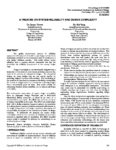
|
A Treatise On System Reliability and Design Complexity
Trewn, J., Yang, K.
1st International Conference on Axiomatic Design, 2000
The quality improvement process of reliability assessment and improvement is often a post design exercise that is traditionally practiced on the component level of products as a post design validation exercise. This article defines system reliability from a function delivery perspective that lays the foundation for reliability improvement in the concept design stage.
|
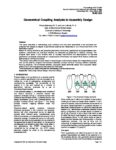
|
Geometrical Coupling Analysis in Assembly Design
Söderberg, R., Lindkvist, R.
2nd International Conference on Axiomatic Design, 2002
This paper describes a methodology and a software tool that allow assemblies to be evaluated and analyzed with respect to degree of geometrical coupling and robustness on any hierarchical level of the assembly structure. Based on mating conditions and specified geometrical constraints, geometrical couplings between sub-systems, components and individual features are detected and presented in stability matrices. The analysis tools assist in the iterative work of concept improvement and decomposition of top-level geometrical constraints (tolerances on critical product dimensions) into bottom level feature constraints (tolerances on individual surfaces). The analysis tools utilize the basic ideas in robust design and axiomatic design (the independence axiom) and can be used to compare and evaluate assembly concept solutions including different assembly fixturing solutions. The similarities between uncoupled robust assembly design and uncoupled robust tolerancing of individual parts are discussed and illustrated. Three examples are used to describe the methodology and the software tool.
|
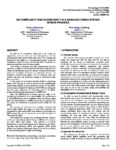
|
On Complexity and Uncertainty in a Manufacturing System Design Process
Bjelkemyr, M., Lindberg, B.
3rd International Conference on Axiomatic Design, 2004
In order to be competitive today and in the future, an organization must be aware of how their products and the correlating life cycle systems affect each other. This is particularly important in the design of a manufacturing system, where the development should be done concurrently with the product to reduce cost and time, and to increase quality. This design of products and their corresponding life-cycle systems is a complex and complicated task that is dependent of several multidisciplinary areas, for example technical, economical, social and managerial. Therefore, the correlation between the developed manufacturing system and the demands from the product and from the operations strategy is established under great uncertainty. In this paper, the connections between different engineering design tools that can be used as support in the manufacturing system design (MSD) process, within the context of two MSDmethodologies, Design for Six Sigma and KTH-IPM, are discussed. Also, the paper elaborates the relationship between the MSDprocess and the development process of a MSD-tool. Next, the MSD-process is broken down in order to be evaluated on performance and dependability. The performance of the MSD-process can be evaluated using the concept logical depth. The dependability of a MSD-process can be evaluated with the notion of uncertainty as presented by Suh [2003] and Lee [2003].
|

|
New Formulations of Design Optimization New Formulations of Design Optimization for Six for Six-sigma, Reliability and Robustness sigma, Reliability and Robustness
Kwak, B. M.
3rd International Conference on Axiomatic Design, 2004
Byung Man KWAK
Samsung Chair Professor, Dept of Mechanical Engineering
Director, Center for Concurrent Engineering Design (CCED)
Korea Advanced Institute of Science and Technology
373-1 Guseong-dong, Yuseong-gu
Daejeon, 305-701 Korea
http://khp.kaist.ac.kr
|
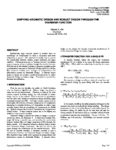
|
Unifying Axiomatic Design and Robust Design Through the Transfer Function
Oh, H. L.
3rd International Conference on Axiomatic Design, 2004
Traditionally, large complex system is evolved from an assemblage of components to form a subsystem and from subsystems to system. The approach invariably fails to capture the connectivity between various output measures and input variables. This paper proposes to “connect the dots” by relating output measures to input variables through the transfer function. With the aid of the transfer function, it becomes possible to give a mathematical treatment of Axiomatic Design and robust design. The treatment clarifies such concepts as independence and information content in Axiomatic Design. It extends robust design to design for multiple functional requirements. It unifies Axiomatic Design and robust design. Examples are provided to illustrate the unification.
|
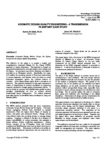
|
Axiomatic Design Quality Engineering – a Transmission Planetary Case Study
El-Haik, B., Wasiloff, J. M.
3rd International Conference on Axiomatic Design, 2004
The objective of this paper is to present a simple and comprehensive integrated Design for Six Sigma (DFSS) approach to design robustness. The approach is hinged on conceptual components for axiomatic design, robust design and Six Sigma. An automatic transmission planetary case study is provided as an illustration vehicle. Specifically, this paper will explore the cascading process of functional requirements to design parameters and features while providing an initial robustness assessment against the common sources of variation. A Six Sigma design quality level is pursued as an objective. The approach presented in this paper represents a stream of development to achieve excellence by improving customer satisfaction through quality enhancement efforts. It can be viewed as a process with detailed steps needed to cast a complete understanding of how to achieve desired breakthrough design improvement. The method presented here relies heavily on the DFSS theory developed by Yang and El-Haik (2003).
|
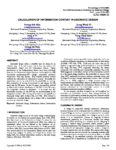
|
Calculation of Information Content in Axiomatic Design
Shin, G. S., Yi, J. W., Yi, S. I., Kwon, Y. D., Park, G. J
3rd International Conference on Axiomatic Design, 2004
Axiomatic design offers a scientific base for design in an efficient way. It is well known that it has two axioms: the Independence Axiom and the Information Axiom. Many applications of the Independence Axiom have been published, however, the Information Axiom has been mainly applied to 1FR (functional requirement)-1DP (design parameter) problems except for a few case studies. This research presents various methods for calculation of information content. Generally, the information content is evaluated by the probability of success. The probability of success is calculated in two ranges: the FR range and the DP range. In the FR range, the graphical method is utilized with uniform distribution of the DP. In the DP range, the integration method is employed. It is noted that any distribution function of the DP can be accommodated in the integration method. The developed method can be applied to a decoupled design with multiple FRs and DPs. The method is extended to a coupled design and a design with a hierarchical structure of axiomatic design.
|
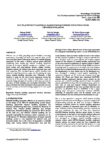
|
Multi-attribute Material Handling Equipment Selection Using Information Axiom
Kulak, O., Satoglu, S. I., Durmusoglu, M. B.
3rd International Conference on Axiomatic Design, 2004
Effective use of labor, providing system flexibility, increasing productivity, decreasing lead times and costs are some of the most important factors influencing selection of material handling equipment. In this study, a decision support system (MHAD) considering these factors for material handling equipment selection is developed. MHAD consists of a database, a rulebased system and multi-attribute decision making modules. Database includes the detailed data about equipment types and their properties. The rule-based system module provides rules which are utilized by inference engine for determining the most proper material handling equipment type. Ultimately, a final decision is made for the most proper equipment among the alternatives of the same type using the information axiom of axiomatic design principles. Evaluation of alternatives is made for the cases of both complete and incomplete information. This paper introduces the fuzzy Information axiom approach and uses it in the selection of material handling equipment in a real world problem.
|
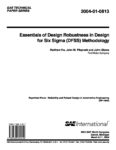
|
Essentials of Design Robustness in Design for Six Sigma (DFSS) Methodology
Matthew Hu, John M. Pieprzak and John Glowa
Tech Papers
Ford Motor Company, 2004 SAE World Congress, Detroit, Michigan, March 8-11, 2004
Design for Six Sigma (DFSS) is a systematic process and a disciplined problem prevention approach to achieve business excellence. Robust design is the heart of DFSS. To enable the success of robust parameter design, one should start with good design concept. Axiomatic Design, a fundamental set of principles that determine good design practice, can help to facilitate a project team to accelerate the generation of good design concept. Axiomatic Design holds that uncoupled designs are to be preferred over coupled design. Although uncoupled designs are not always possible, application of axiomatic design principles in DFSS presents an approach to help DFSS team focus on functional requirements to achieve design intents and maximize product reliability. As a result of the application of axiomatic design followed by parameter design, the DFSS team achieved design robustness and reliability. A hydraulic lash adjuster case study will be presented.
|
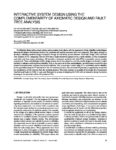
|
Interactive System Design Using the Complementary of Axiomatic Design and Fault Tree Analysis
Gyunyoung Heo, Taesik Lee, Sung-hee Do
Tech Papers
MIT Department of Mechanical Engineering, MIT, Cambridge, MA, September, 2006.
To efficiently design safety-critical systems such as nuclear power plants, with the requirement of high reliability, methodologies allowing for rigorous interactions between the synthesis and analysis processes have been proposed. This paper attempts to develop a reliability-centered design framework through an interactive process between Axiomatic Design (AD) and Fault Tree Analysis (FTA). Integrating AD and FTA into a single framework appears to be a viable solution, as they compliment each other with their unique advantages. AD provides a systematic synthesis tool while FTA is commonly used as a safety analysis tool. These methodologies build a design process that is less subjective, and they enable designers to develop insights that lead to solutions with improved reliability. Due to the nature of the two methodologies, the information involved in each process is complementary: a success tree versus a fault tree. Thus, at each step a system using AD is synthesized, and its reliability is then quantified using the FT derived from the AD synthesis process. The converted FT provides an opportunity to examine the completeness of the outcome from the synthesis process. This study presents an example of the design of a Containment Heat Removal System (CHRS). A case study illustrates the process of designing the CHRS with an interactive design framework focusing on the conversion of the AD process to FTA.
|
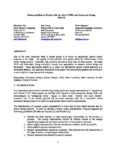
|
Enhancing Robust Design with the Aid of TRIZ and Axiomatic Design (Part I)
Hu M., Yang K., Taguchi S.
Tech Papers
Nov. 2000.
One of the most important tasks in robust design is to select an appropriate system output response in the study. The quality of this selection will greatly affect the effectiveness of the robust design project. Currently, this selection process is more like art than science. By using TRIZ and Axiomatic Design principle, several new approaches to enhance robust design are developed. These approaches enable us to select the appropriate system output response in a systematic fashion. The approach described in this paper was successfully applied and verified in a case study in a large automotive company.
|
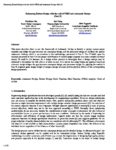
|
Enhancing Robust Design with the Aid of TRIZ and Axiomatic Design (Part II)
Hu M., Yang K., Taguchi S.
Tech Papers
Nov. 2000.
This paper describes how to use the framework of Axiomatic Design to identify a proper system output response and bridge the gap between the conceptual design and the parameter design to facilitate the upfront robustness thinking, which is an extension to the methodology, presented in Part I. Part II builds upon the rationale presented in Part I for the proper identification of system output response in a more complex technical system. It could be, for instance, be a design review process to investigate how a design concept may be optimized to desensitize the side effects of noise factors. It is shown that using bottom-up approach based on axiomatic design bridges the gap between conceptual design and parameter design. By applying the method in Part II, engineer gains deeper insight of design concept structure and the physical effects of the corresponding design parameters.
|